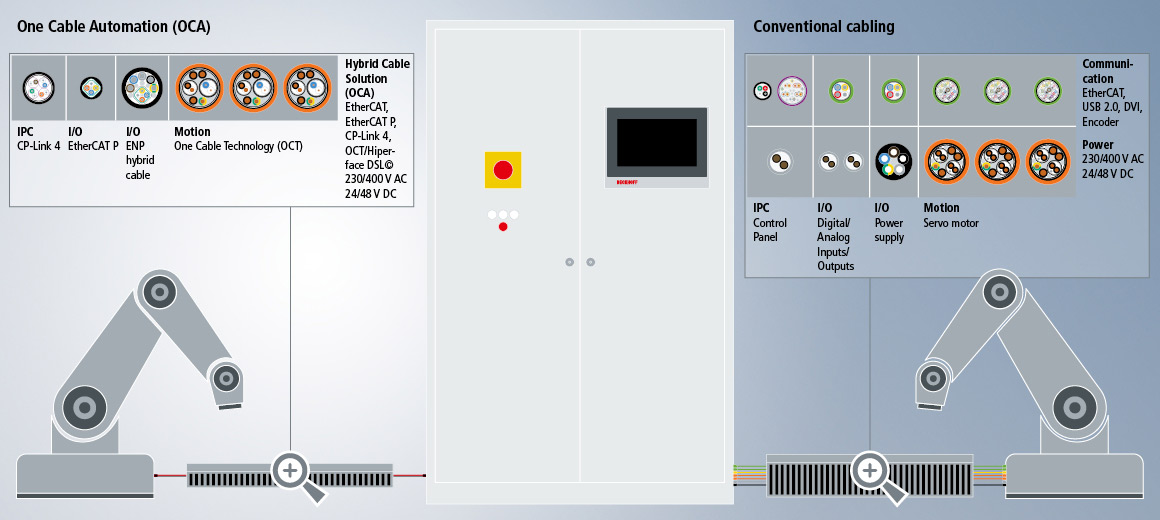

Although both approaches have their advantages and disadvantages, industrial automation is showing a preference for One Cable Automation due to the savings and simplicity that it brings for the design, construction, and operation of machinery and systems.
One Cable Automation (OCA):
- Simplified wiring: The OCA system from Beckhoff uses a single cable for both power supply and data transmission. This reduces the number of connections and cables required.
- Space saving: Bundling the power supply and data into one cable saves space in the machine's cable channels and cable trays.
- Lower costs: Having less cables generally results in lower costs for materials and installation.
- Less susceptibility to faults: As the number of physical connections is reduced, the number of potential sources of faults also decreases.
- Easier servicing and maintenance: Fault diagnosis and component replacement are often easier if there is only one cable per device.
- Future-proof: Our OCA solution is designed to support more advanced and faster communication protocols.
Conventional wiring:
- Separate systems: Classic approaches use separate cables for energy transfer and data communication.
- Flexible component selection: As the system is not dependent on how a few specific components interact, different components can be combined more easily.
- Redundancy: In critical systems, implementing separate systems for power and data can provide increased reliability.
- Broad compatibility: This multi-cable solution can work with a wide range of existing products and standards that do not have any specific requirements.
- Special applications: Certain sectors may have specific requirements that cannot be covered by standardized OCA solutions.